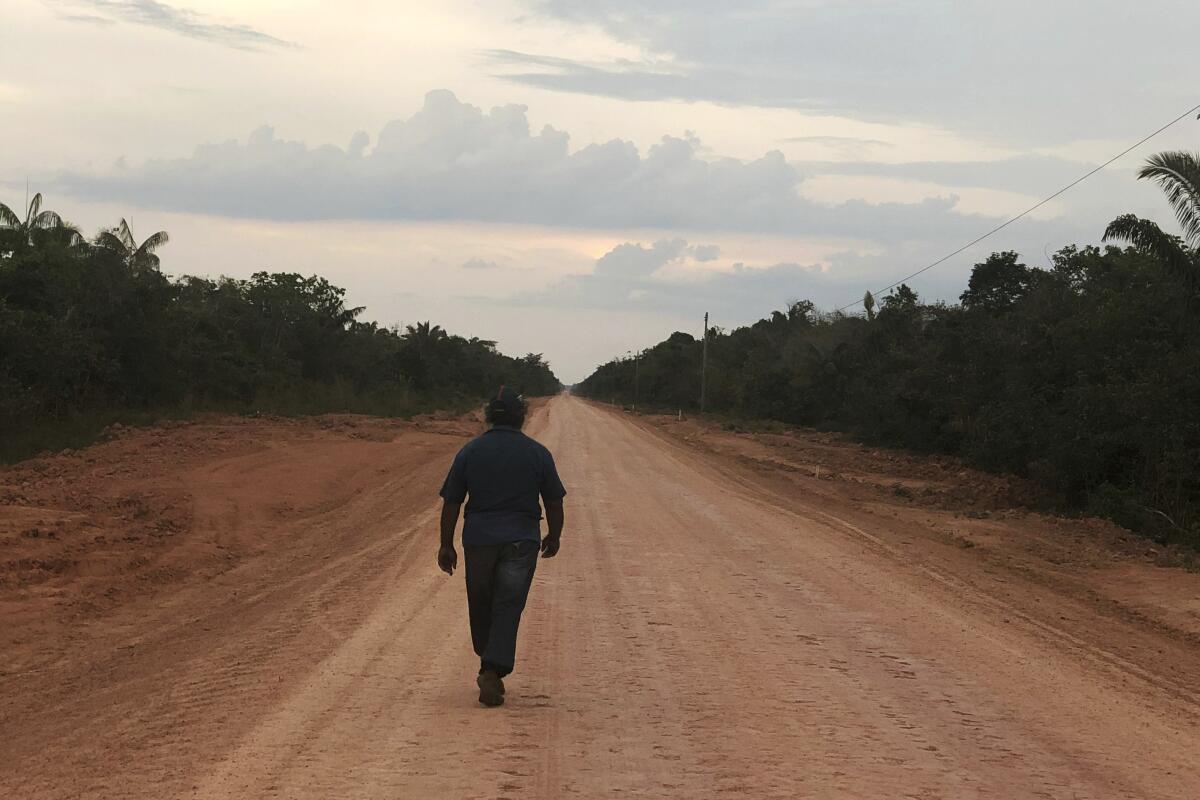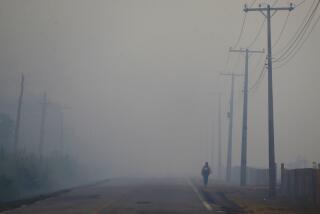Brazil moves toward paving a road through a preserved Amazon area

- Share via
RIO DE JANEIRO — In a decision that critics have labeled as dangerous, Brazil’s government has granted a preliminary environmental permit for paving a dirt highway that cuts through one of the Amazon rainforest’s preserved areas.
BR-319 runs about 560 miles and is the only highway connecting Manaus, home to 2.2 million people, with the nation’s urban centers to the south. Half the length of BR-319 is unpaved; that stretch usually becomes impassable during the rainy season, which can last up to three months, helping to keep forest clear-cutters away.
Researchers and environmentalists argue that the paving of the highway will lead to mass clearing of pristine rainforest, given that most Amazonian deforestation occurs alongside roads, where access is easier and land value is higher. In fact, that has been happening already.
“Law enforcement actions are insufficient to curb the illegal occupation, invasions, deforestation, land speculation and pressures that have been increasing exponentially in recent years,” Fernanda Meirelles, executive secretary of watchdog group BR-319 Observatory, told the Associated Press.
The preliminary license, a crucial part of the project’s approval, means that it has passed economic and environmental screens. The work can’t begin yet, though: Brazil’s environmental agency, Ibama, has laid down several conditions, including the creation of a conservation area as a buffer for an Indigenous group, the monitoring of water quality and the development of an archaeological program.
But the agency is ignoring “the main problem: the explosion of deforestation in the region,” Suely Araújo, Ibama’s former president, told the AP.
The conditions established in the license are not enough to ensure that there won’t be a surge in deforestation, so it shouldn’t have been granted, said Araújo, who is now a senior public policy specialist at the Climate Observatory, a network of environmental groups.
Brazilian President Jair Bolsonaro, who is campaigning for reelection, celebrated the permit on his Twitter account as another example of an infrastructure project moving ahead under his watch and said the paving will keep traffic flowing in the nation’s interior.
“Brazilians have gotten used to cars and trucks getting bogged down on the BR-319 highway,” he wrote, along with a video showing deep mud on the road. “This time, fortunately, it is coming to an end.”
After Bolsonaro repeatedly promised to pave BR-319, the area around it this year for the first time became the Brazilian Amazon’s main deforestation hot spot, according to official data.
The BR-319 Observatory — a network of nonprofits that include the Brazilian arms of the World Wildlife Fund and Greenpeace — says local communities haven’t been consulted about the project, as the law requires.
“These people’s rights have been violated,” Meirelles said.
More to Read
Sign up for Essential California
The most important California stories and recommendations in your inbox every morning.
You may occasionally receive promotional content from the Los Angeles Times.













